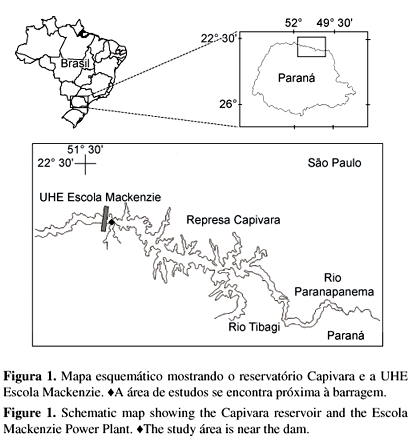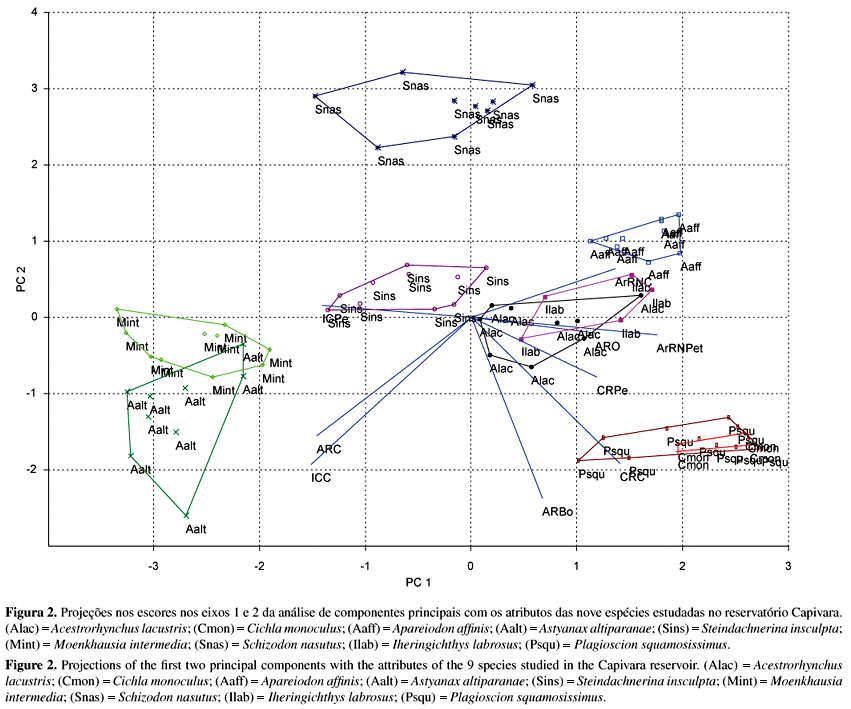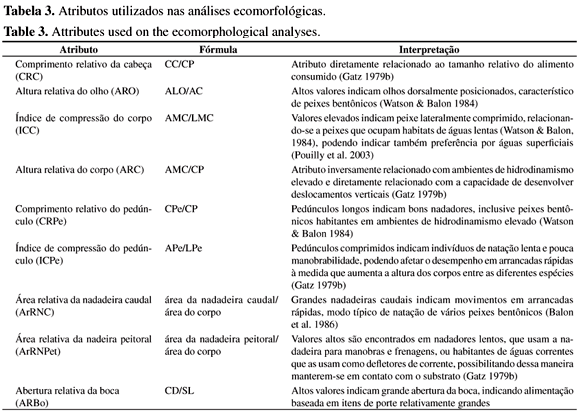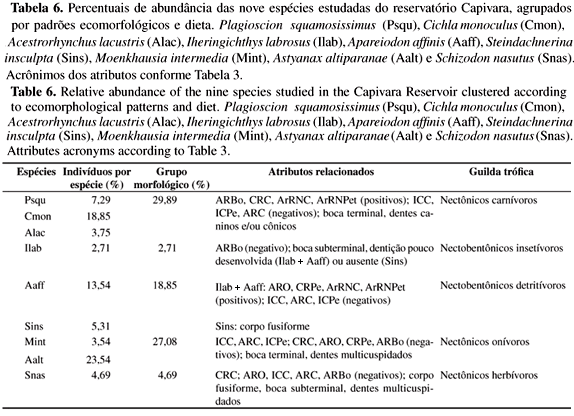The Capivara Reservoir is located at the Medium Paranapanema river, between the states of Paraná and São Paulo and was formed in 1977. Samples made in 2001 and 2002 yielded 62 fish species, 31 of which occurred in the studied stretch. The nine most abundant species were chosen for the ecomorphological analysis. Eight ecomorphological attributes related to habitat use and foraging were employed in order to identify existing ecomorphological patterns among the species as well as relating them to the main food item consumed by each one. A cluster analysis based on the alimentary index (IAi) data grouped the species according to the main food items consumed. Principal component analysis related piscivores to large heads, caudal fins and terminal mouth with pungent teeth; benthic-dwelling fishes were related to small, subterminal mouths and reduced or absent dentition; omnivores attributes reflected taxonomic relatedness rather than any ecomorphological adaptation; herbivores were related to small mouths and multicuspidated dentition. The resulting trophic groups relative abundances agreed to the general pattern observed in reservoirs, showing a predominance of piscivores, detritivores and omnivores. Cichla monoculus (Spix & Agassiz, 1831) and Plagioscion squamosissimus (Heckel, 1840) showed large trophic and ecomorphological overlaps meaning that resource use by both species is probably highly similar. Thus ecomorphology seemed to be a suitable tool for describing habitat preferences as well as the prey capture behavior of piscivore species.
freshwater fishes; numeric ecology; community ecology; trophic ecology











